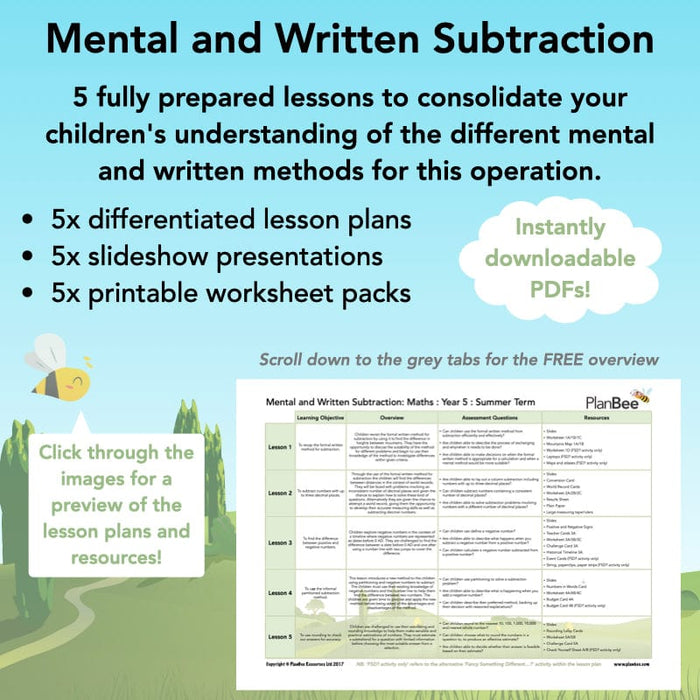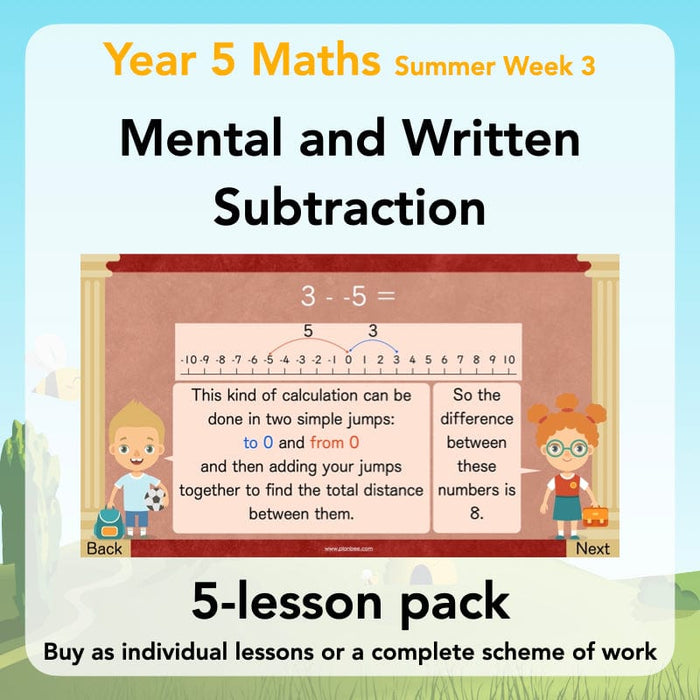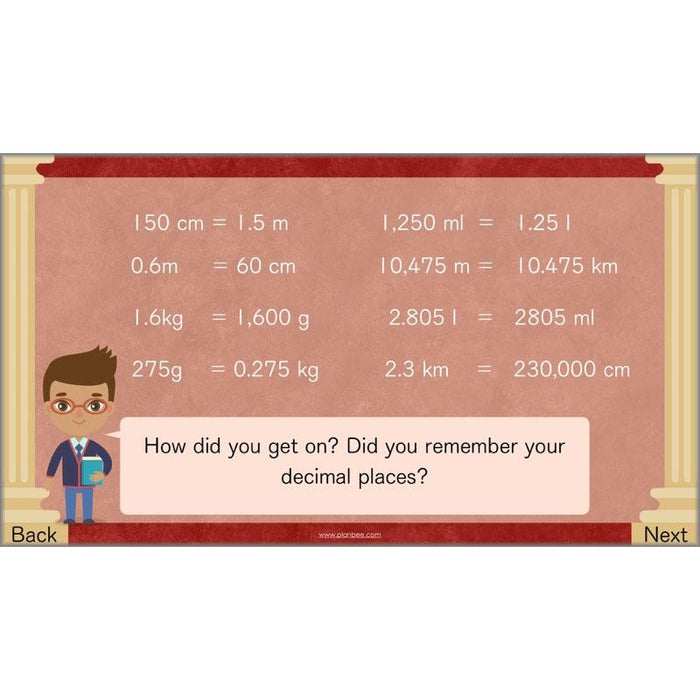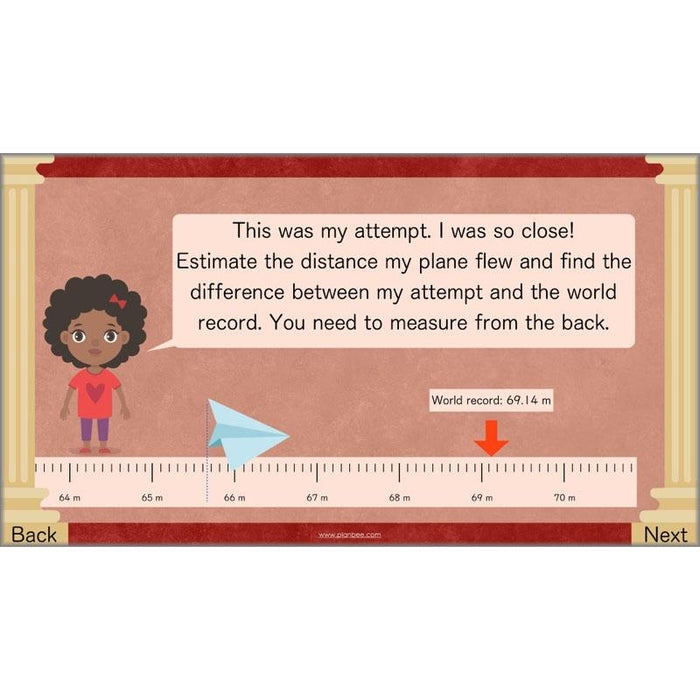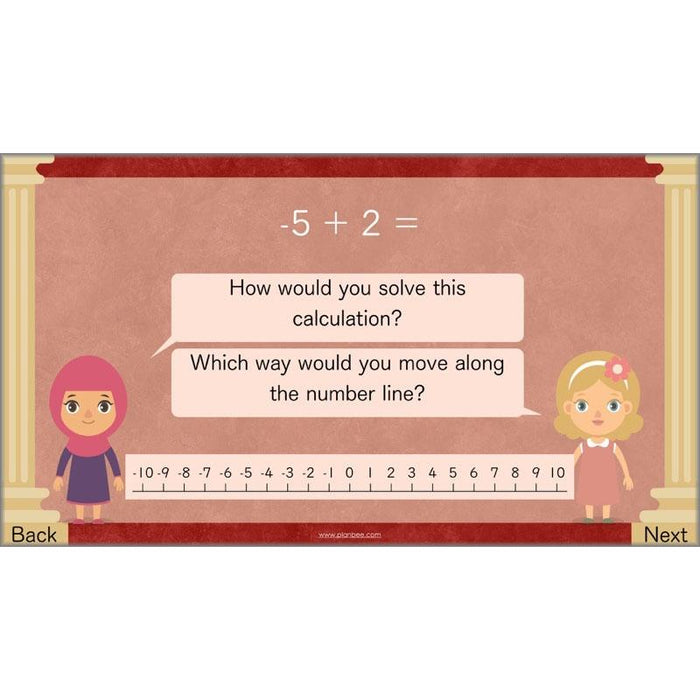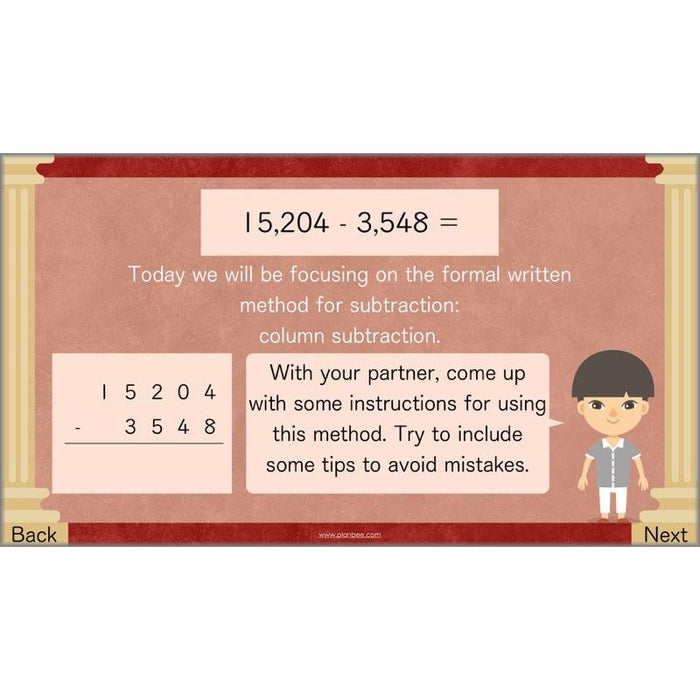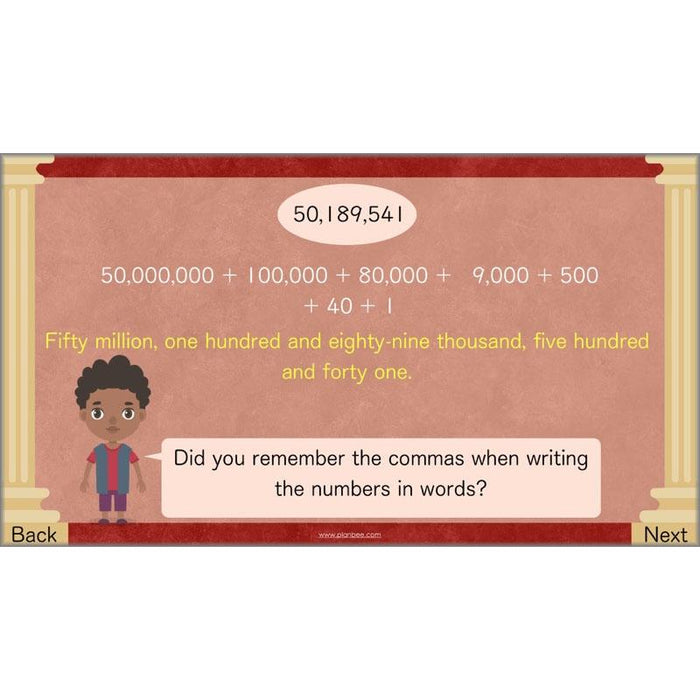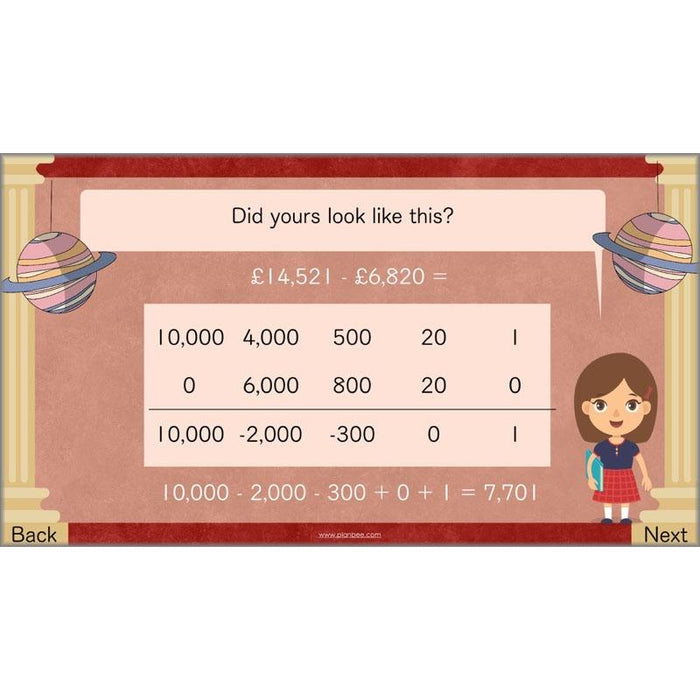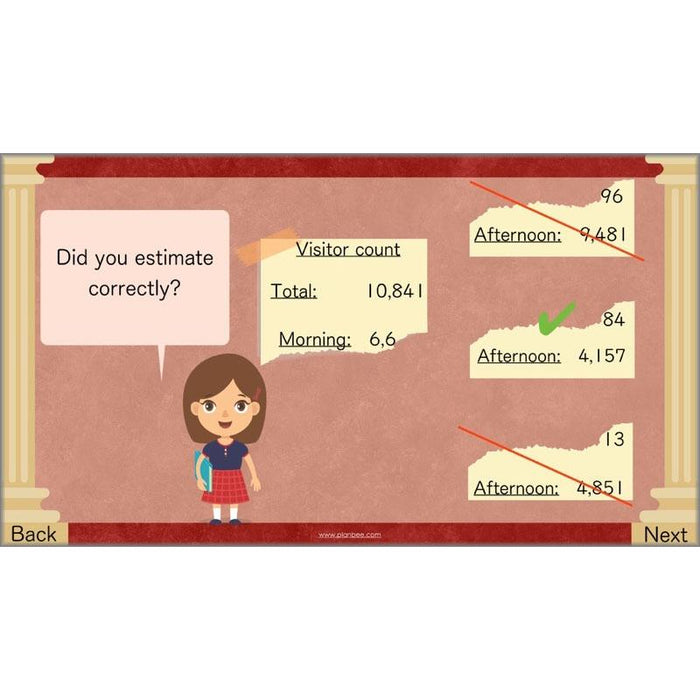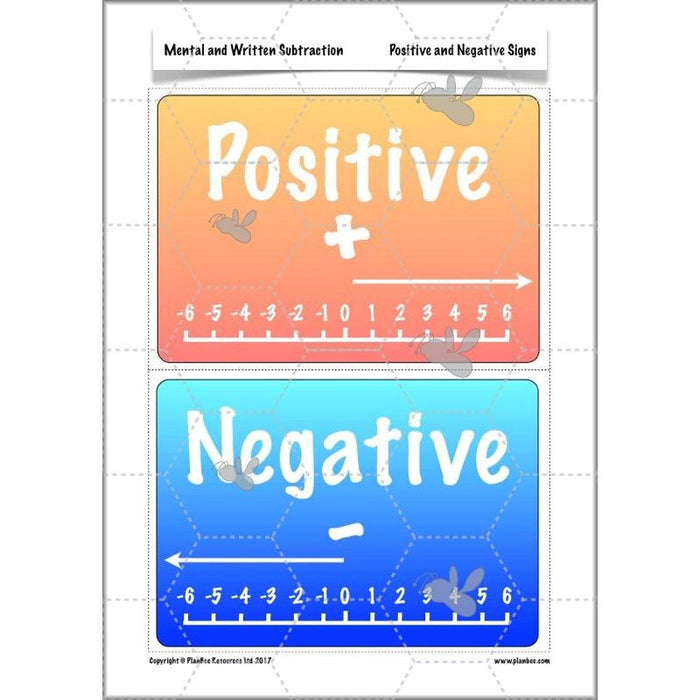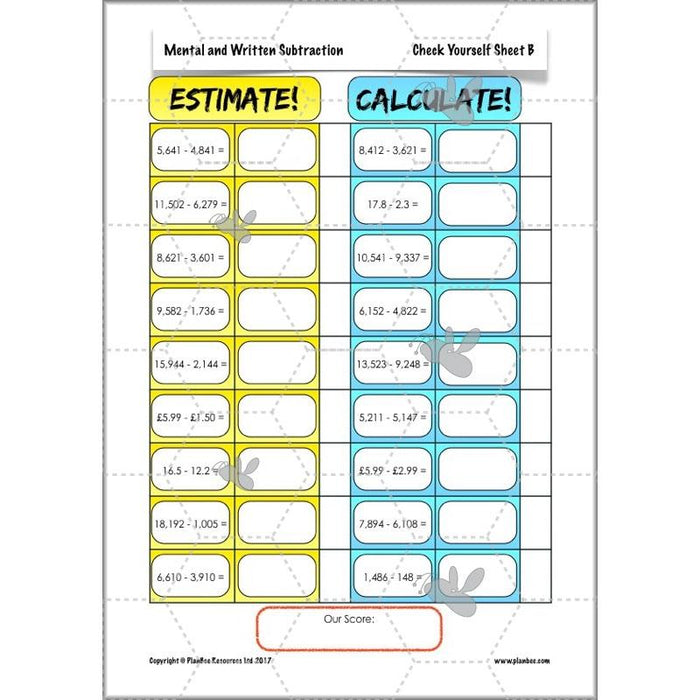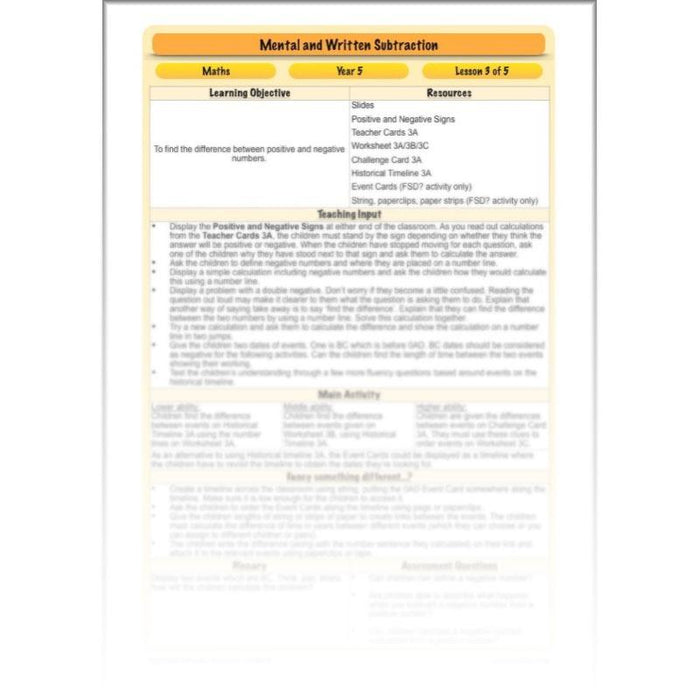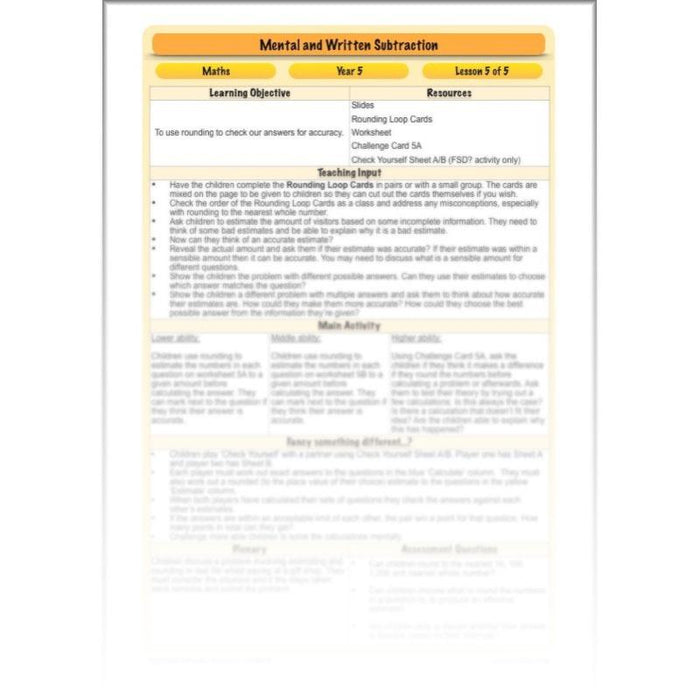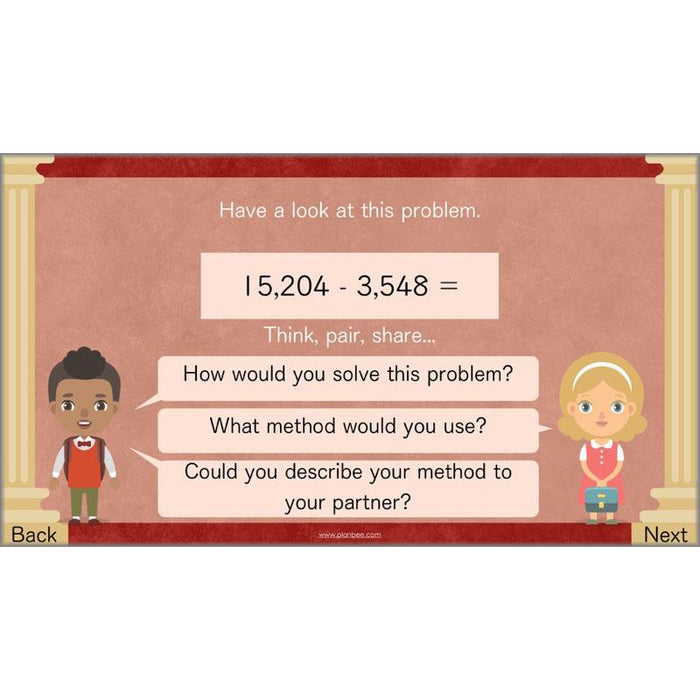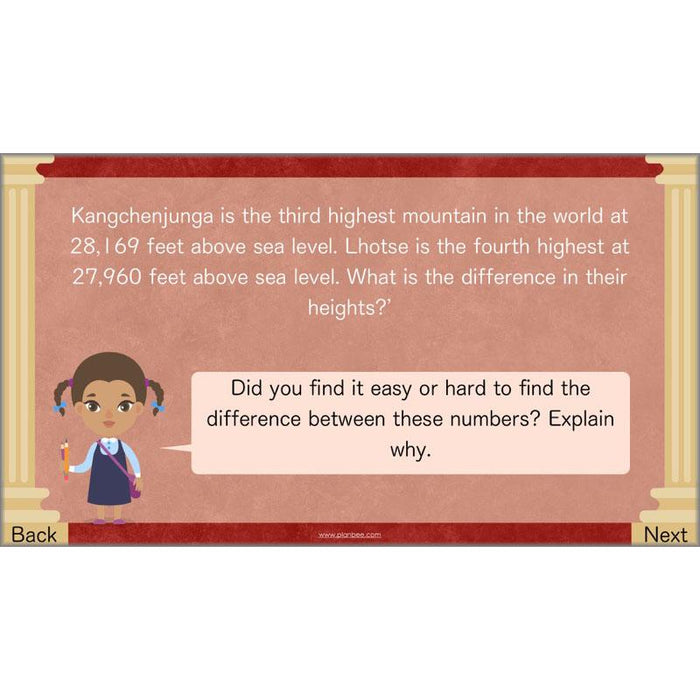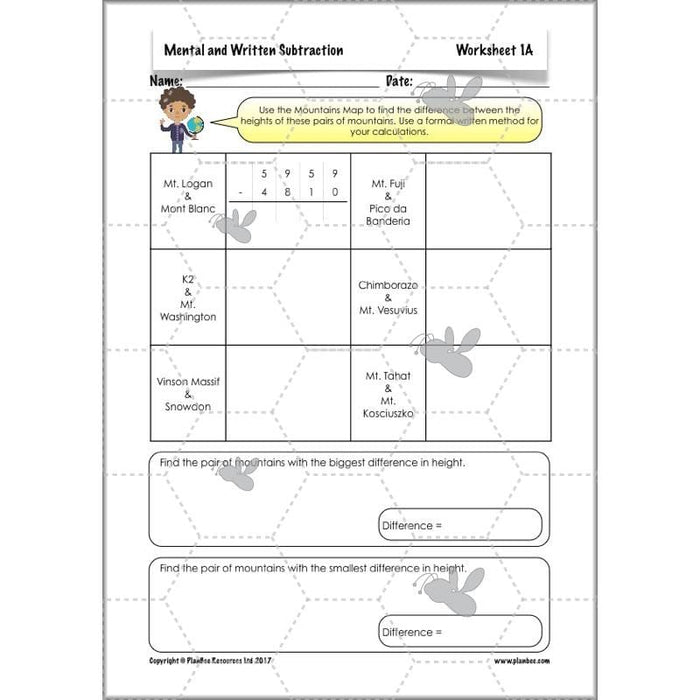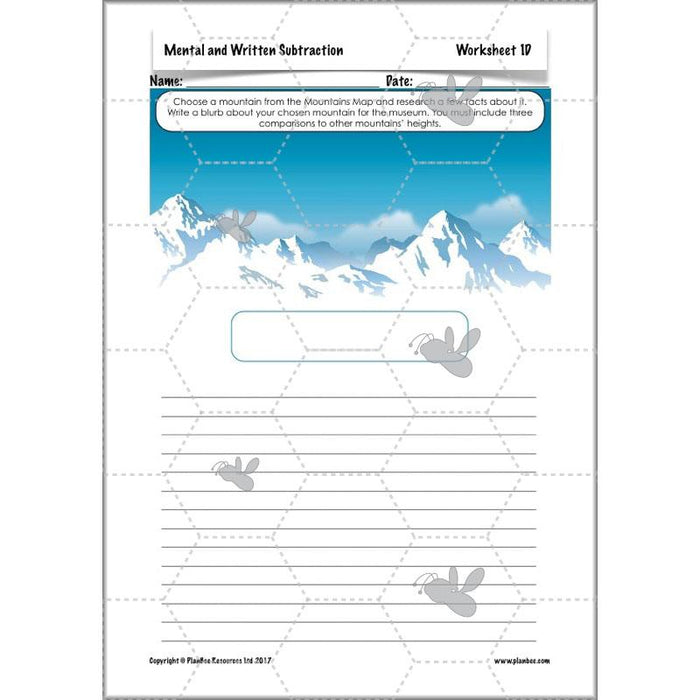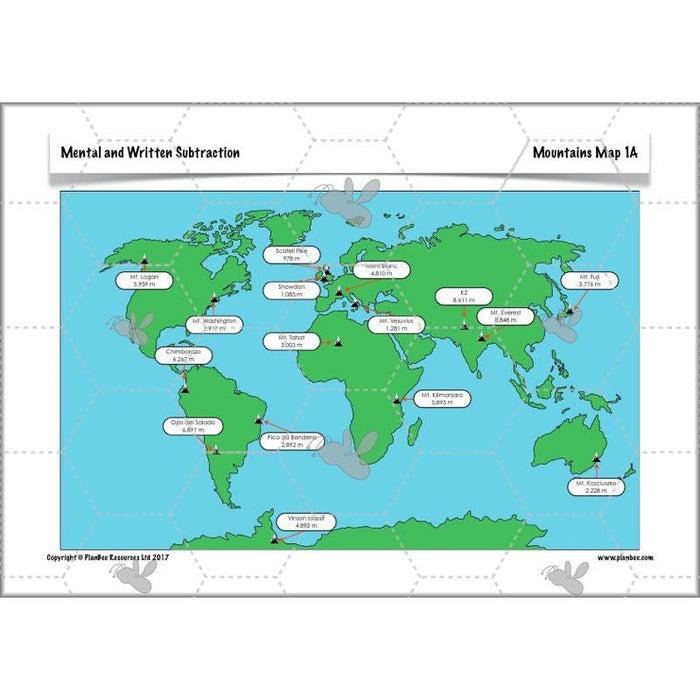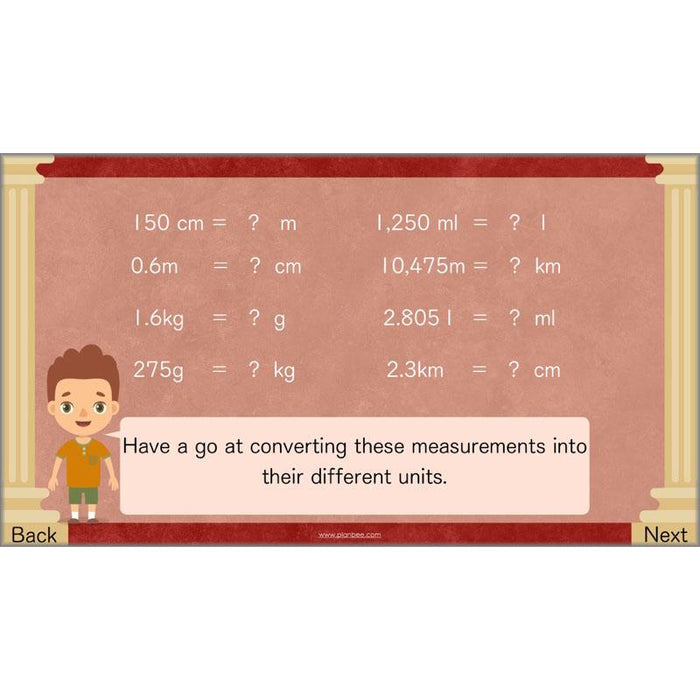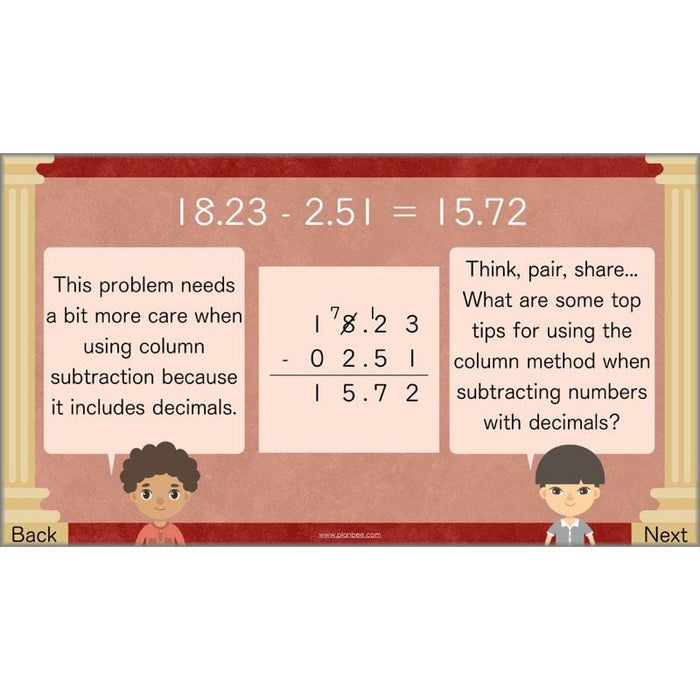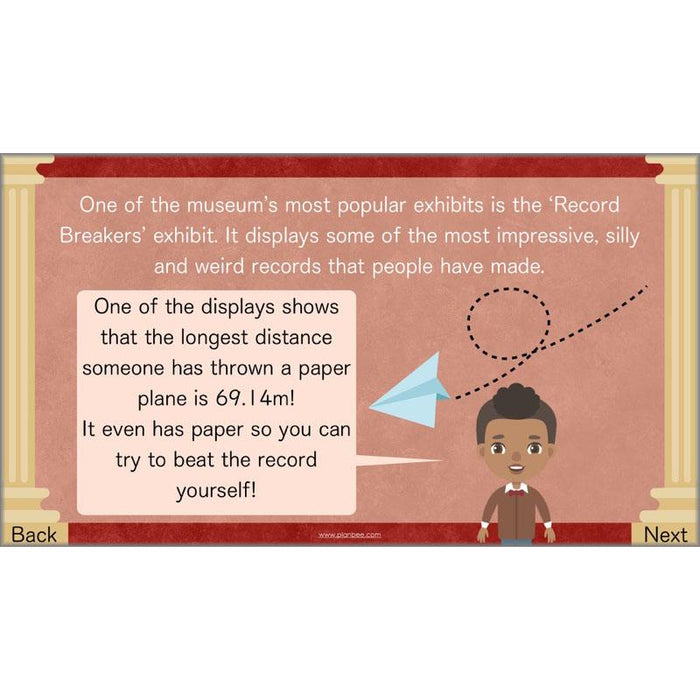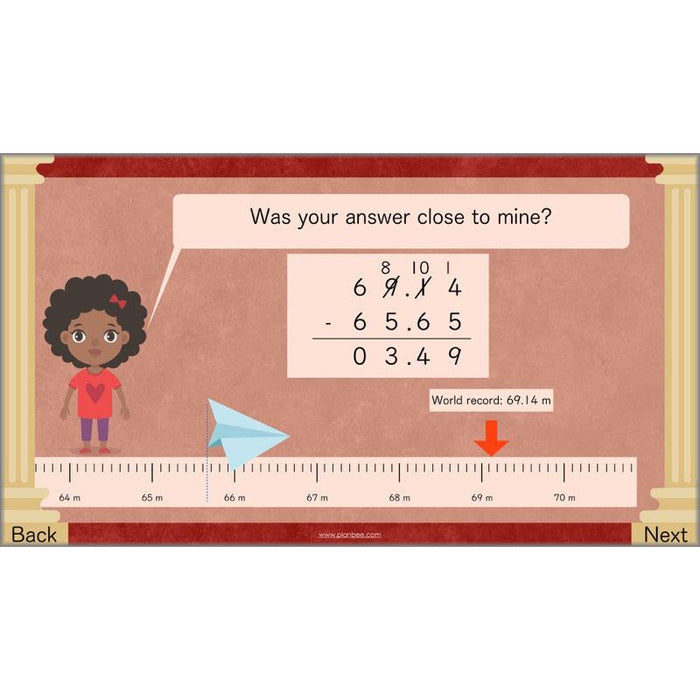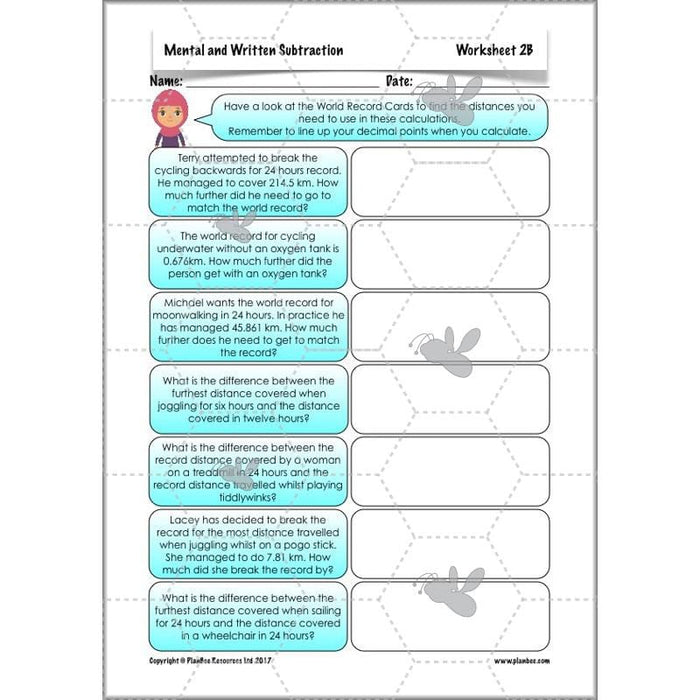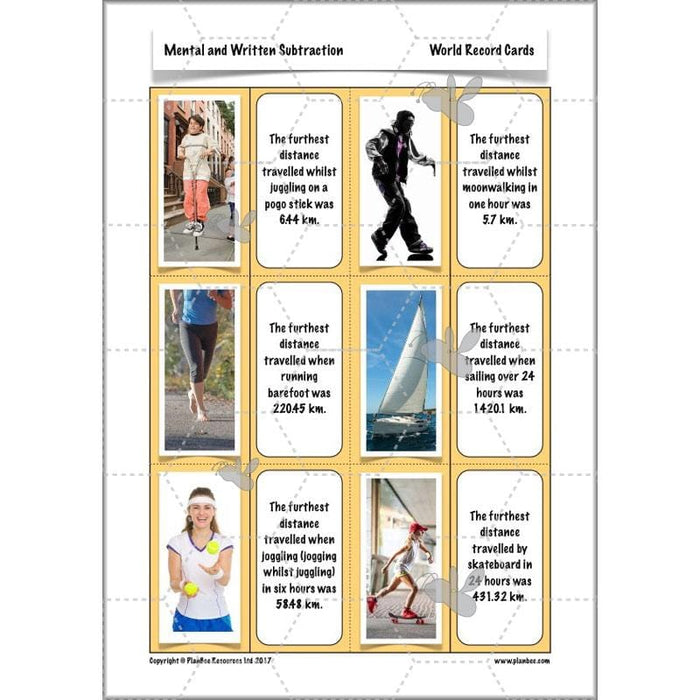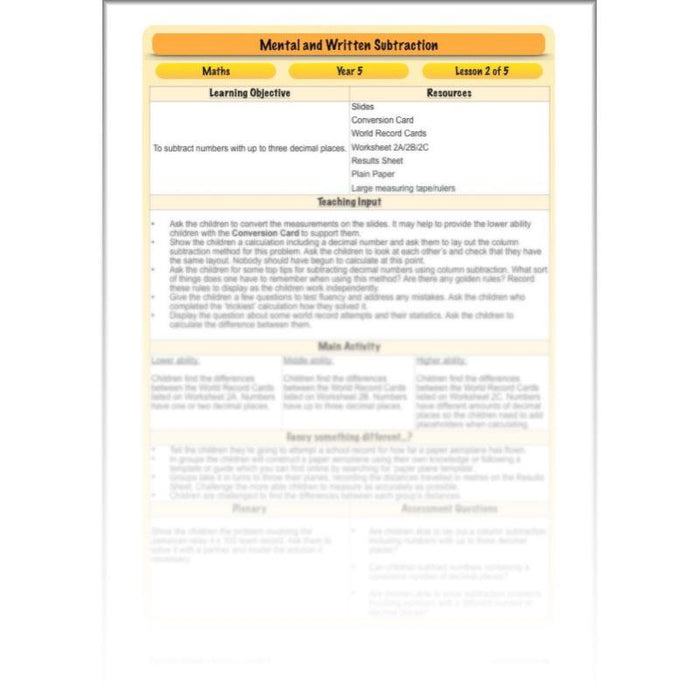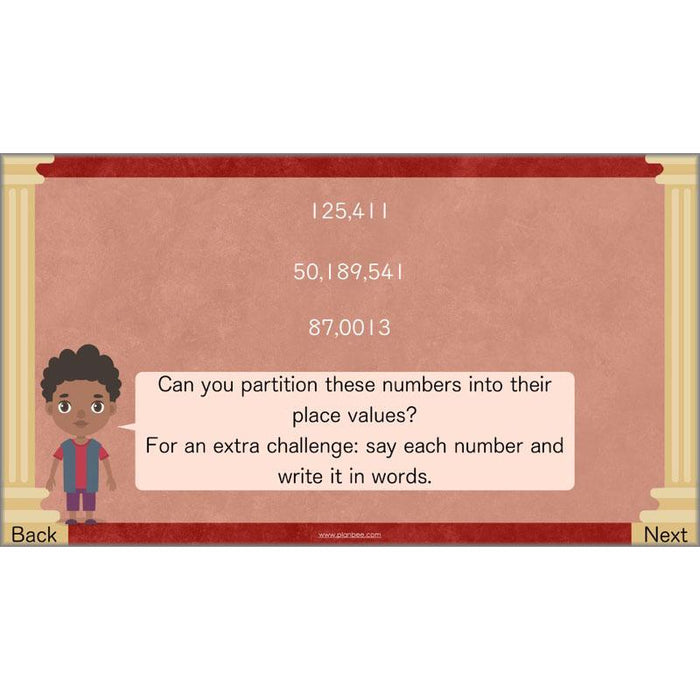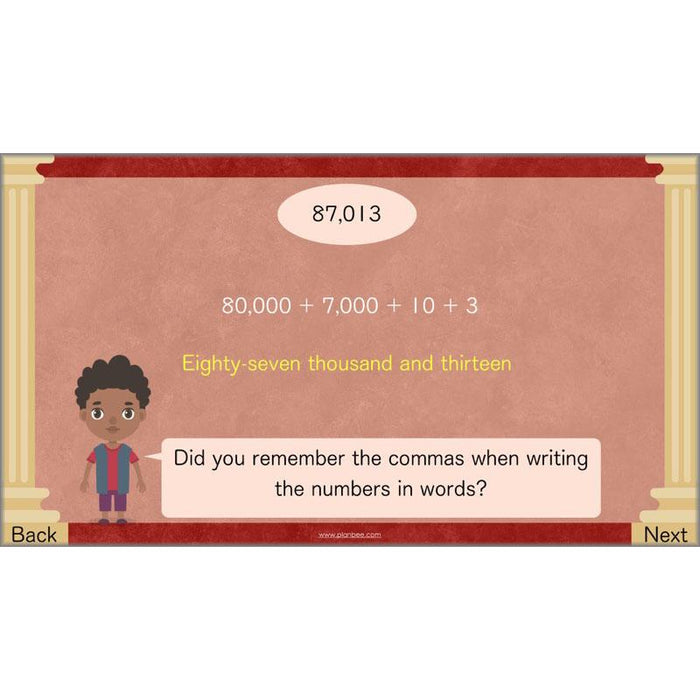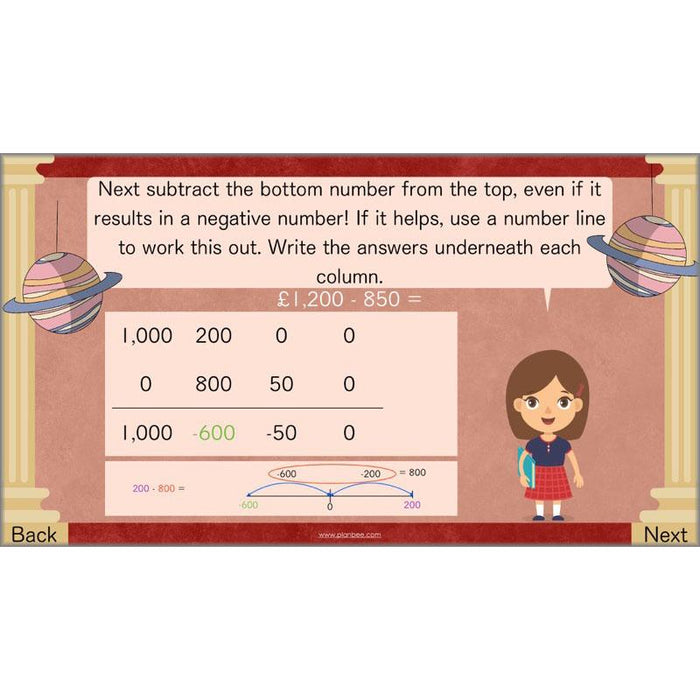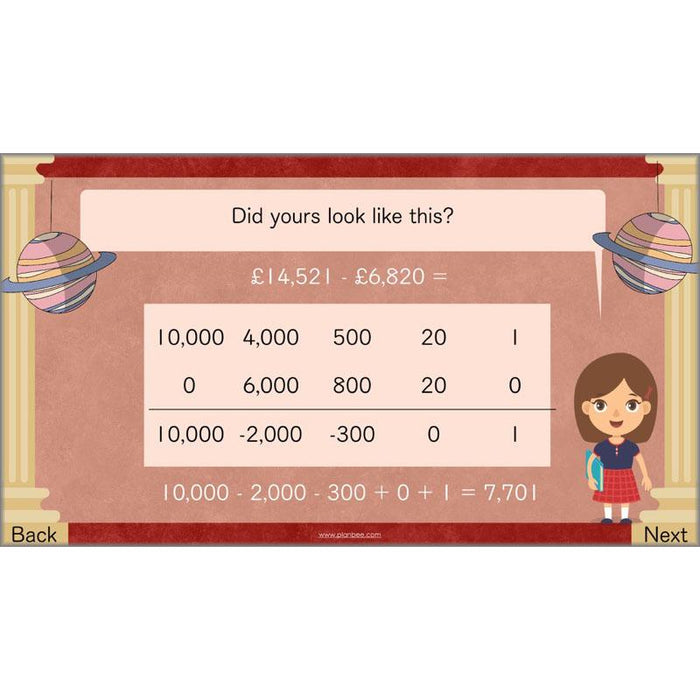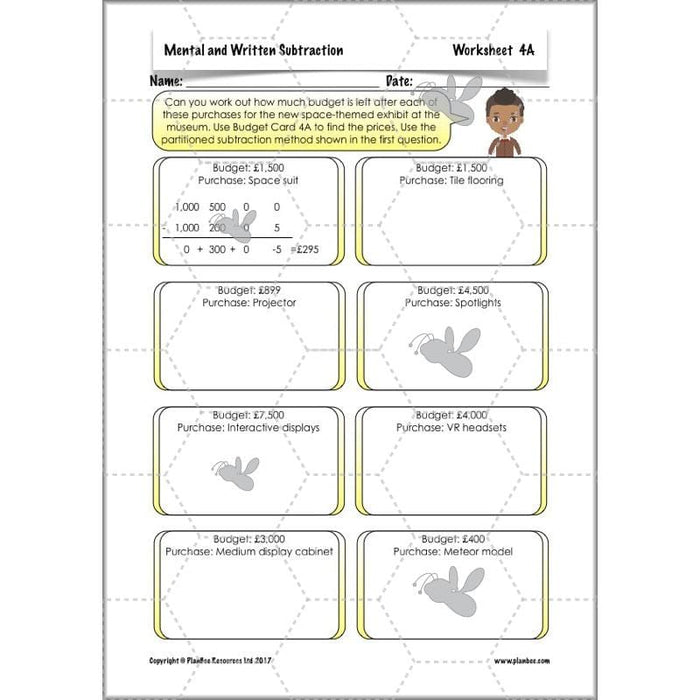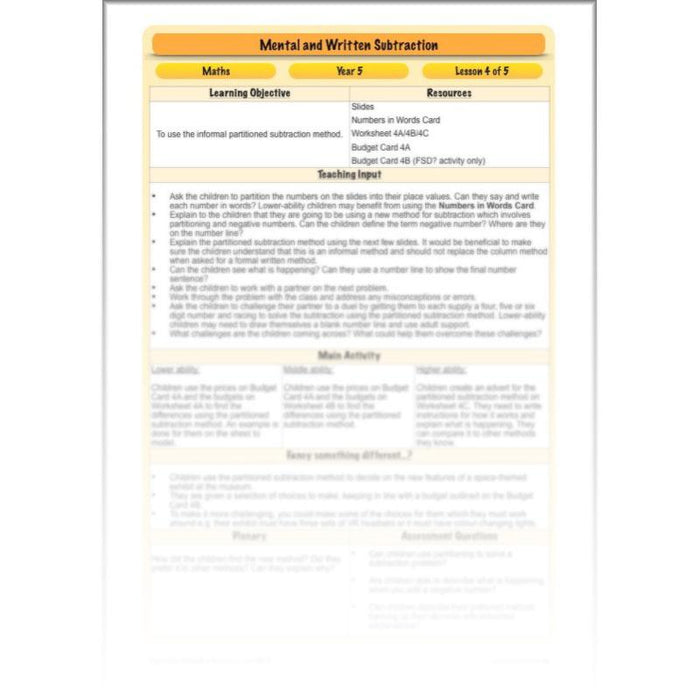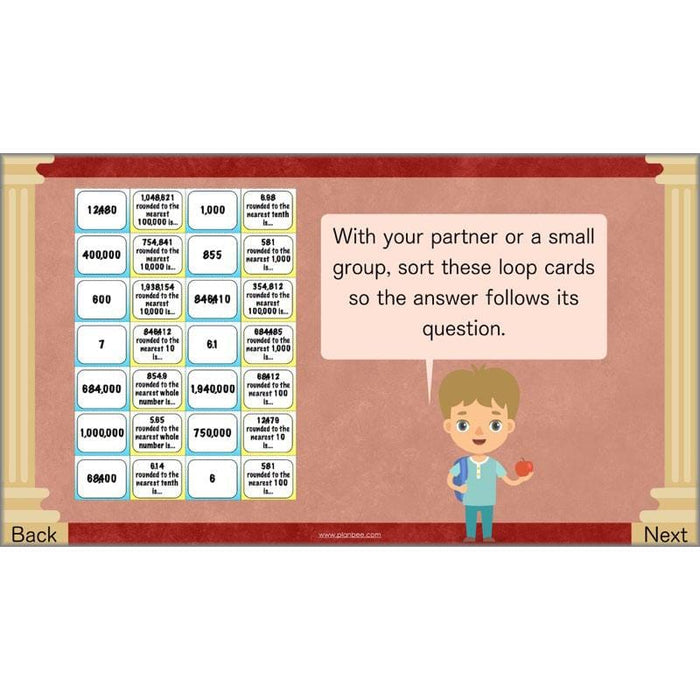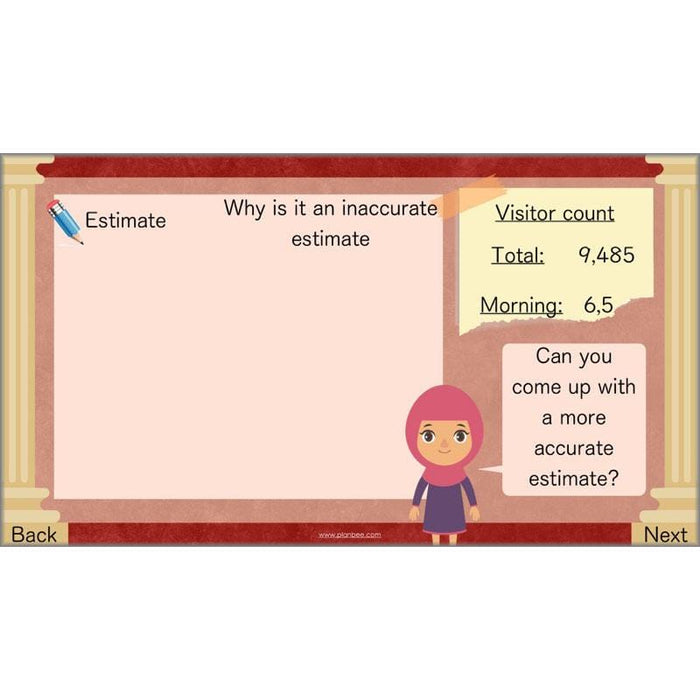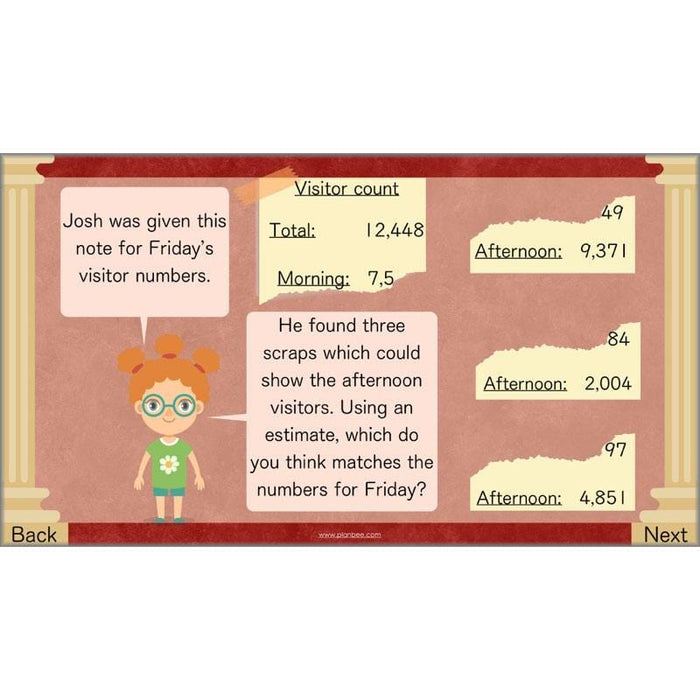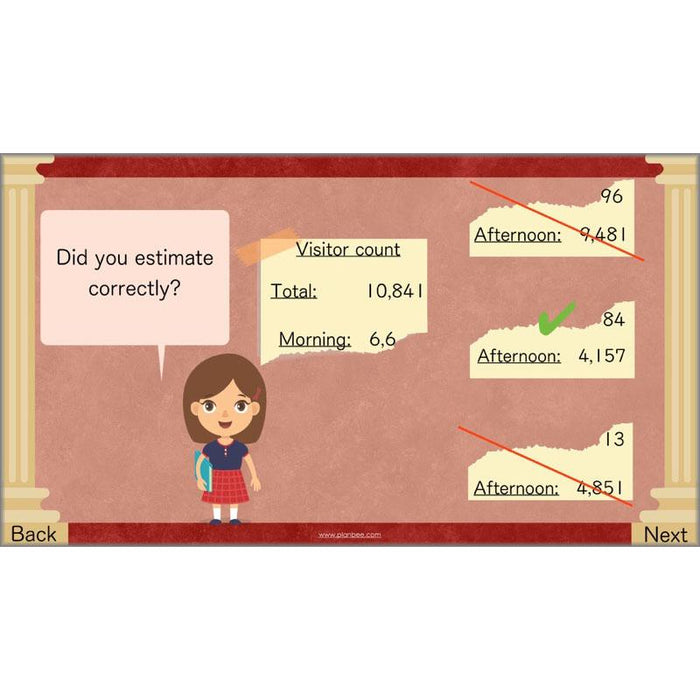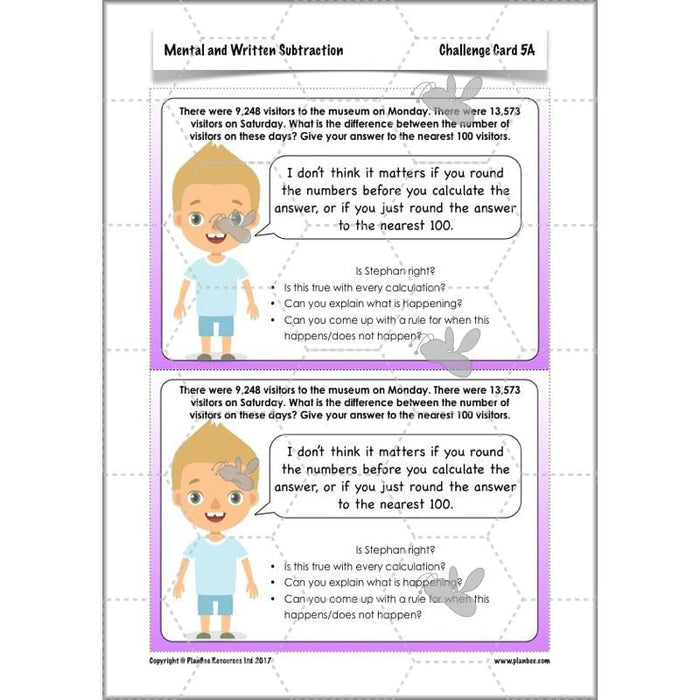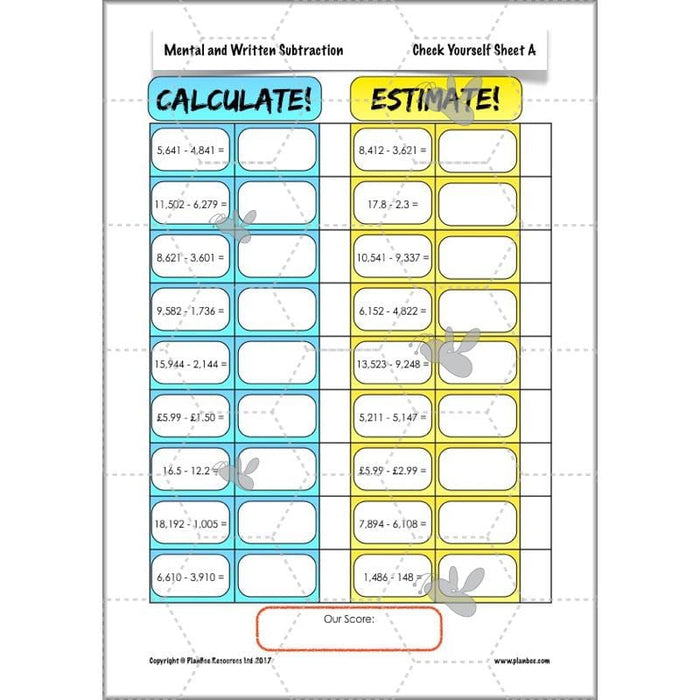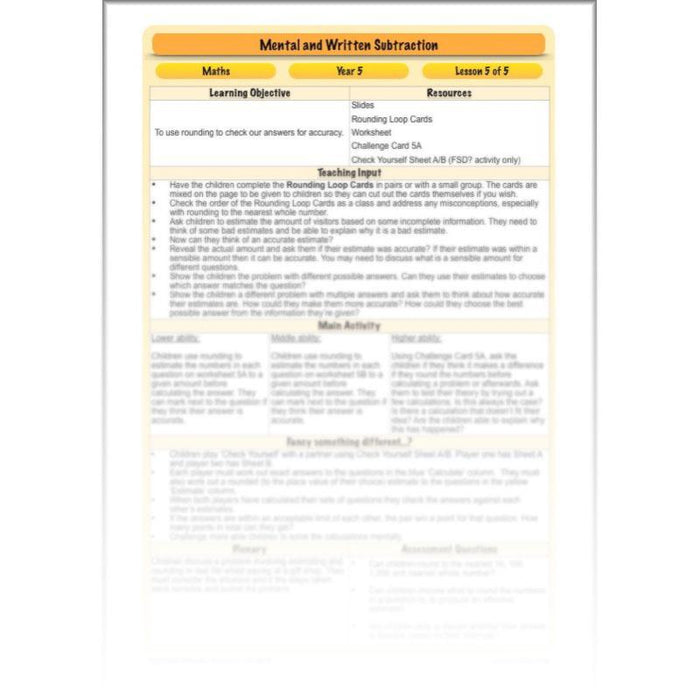#TheCompleteSeries5lessons
Revisit different mental and written methods for subtraction including using negative numbers in context, decimal numbers and rounding and estimating.
#Lesson1FormalSubtraction
Revisit the formal written method for subtraction by using the column method to find the differences between heights of mountains from around the world. Use this opportunity to have the children describe how column subtraction works and when and why they need to exchange. They will be challenged to find the pairs of mountains matching a given criterion using their estimation skills in the process.
What's included:
- Lesson plan
- Slides
- Activity ideas
- Differentiated worksheets
- Mountains map
#Lesson2DecimalNumbers
Children discover the world record attempts for longest distance travelled underwater on a bike and many more. They are challenged to use column subtraction to find the distance between these records in kilometres. They will be reminded of the importance of layout for these problems as well as solving problems involving numbers with different numbers of decimal digits.
What's included:
- Lesson plan
- Slides
- Activity ideas
- Differentiated worksheets
- World record cards
- Results sheet
#Lesson3PositiveandNegativeNumbers
Explore negative numbers in the context of dates before and after 0 AD. The children are challenged to calculate the length of time between dates in history using two jumps along a number line whilst more able children are extended by being expected to use their understanding of subtracting negative numbers to estimate differences to choose suitable dates from a selection.
What's included:
- Lesson plan
- Slides
- Activity ideas
- Differentiated worksheets
- Positive and negative signs
- Teacher cards
- Challenge cards
- Historical timeline
- Event cards
#Lesson4PartitionedSubtraction
Introduce your class to a new method of subtraction involving negative numbers and partitioning. Challenge your class to use their knowledge of negative numbers to subtract numbers with no exchanging and discuss the advantages and disadvantages of this new method with them.
What's included:
- Lesson plan
- Slides
- Activity ideas
- Differentiated worksheets
- Numbers in words card
- Budget cards
#Lesson5Estimating
Challenge your class to use their estimation skills for a purpose. Ask the children to make or choose a sensible estimate for a subtrahend to complete a question with limited information, before discussing what makes an estimate sensible or inaccurate.
What's included:
- Lesson plan
- Slides
- Activity ideas
- Differentiated worksheets
- Challenge card
- Rounding loop cards
- Check Yourself sheet
Free Overview (Medium-Term Plan)
Download a free overview to support your teaching of this scheme of work.
Free Assessment Grid
Download a free, editable assessment grid to support your teaching of this scheme of work.
Curriculum Objectives covered
- Year 5 - add and subtract whole numbers with more than 4 digits, including using formal written methods (columnar addition and subtraction)
- Year 5 - add and subtract numbers mentally with increasingly large numbers
- Year 5 - use rounding to check answers to calculations and determine, in the context of a problem, levels of accuracy
- Year 5 - solve addition and subtraction multi-step problems in contexts, deciding which operations and methods to use and why
- Year 5 - solve problems involving number up to three decimal places
